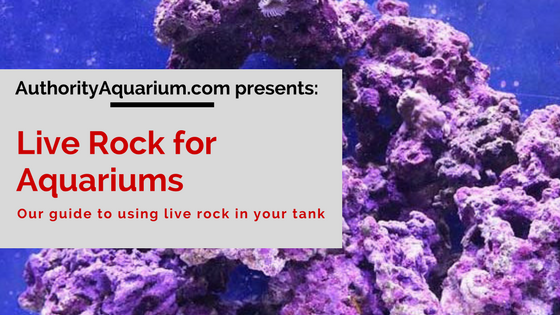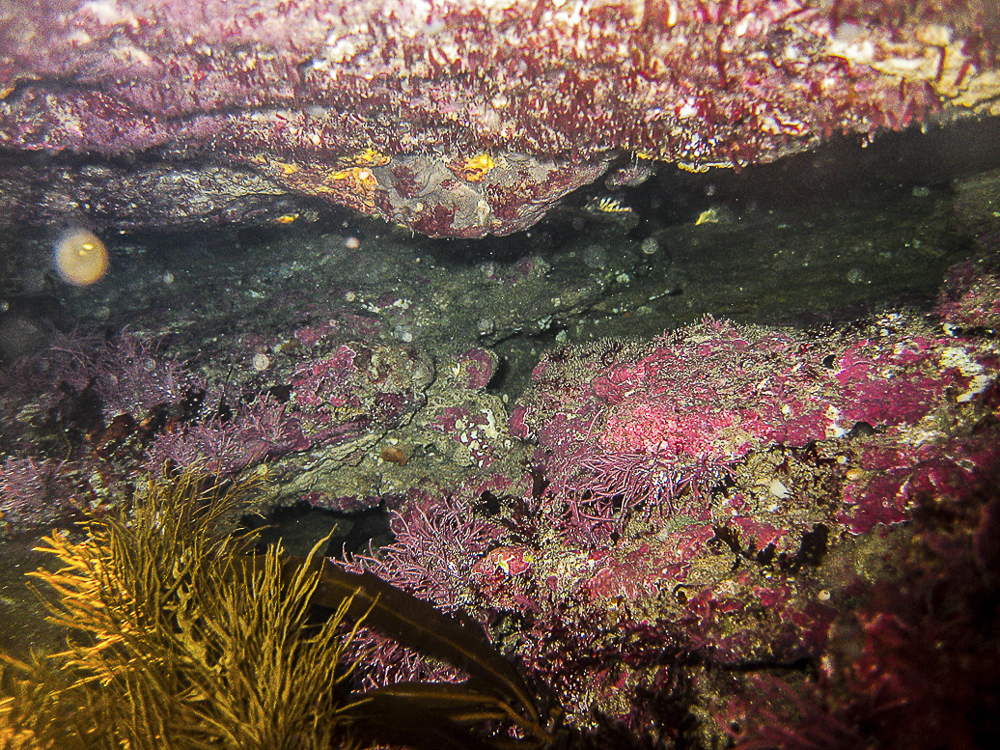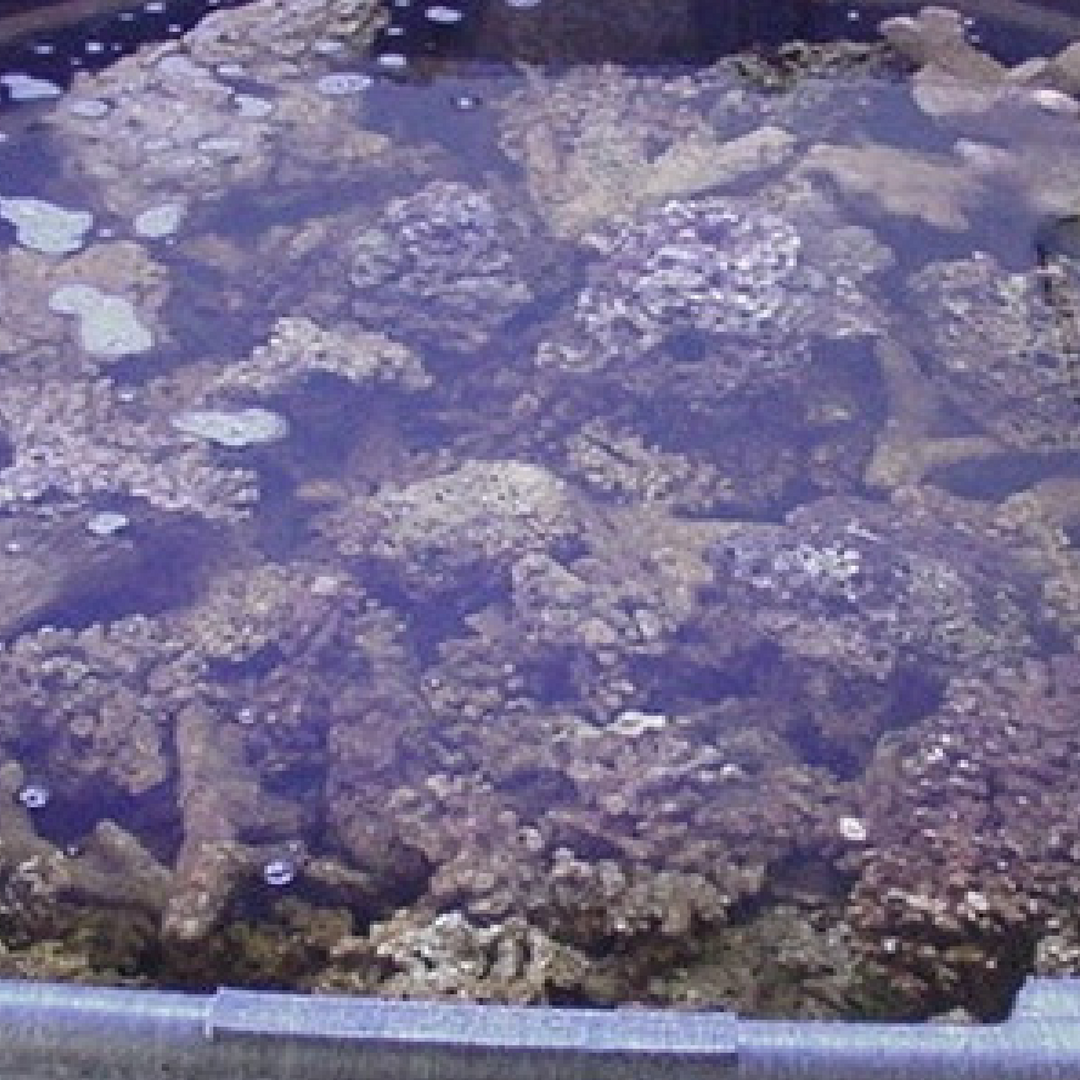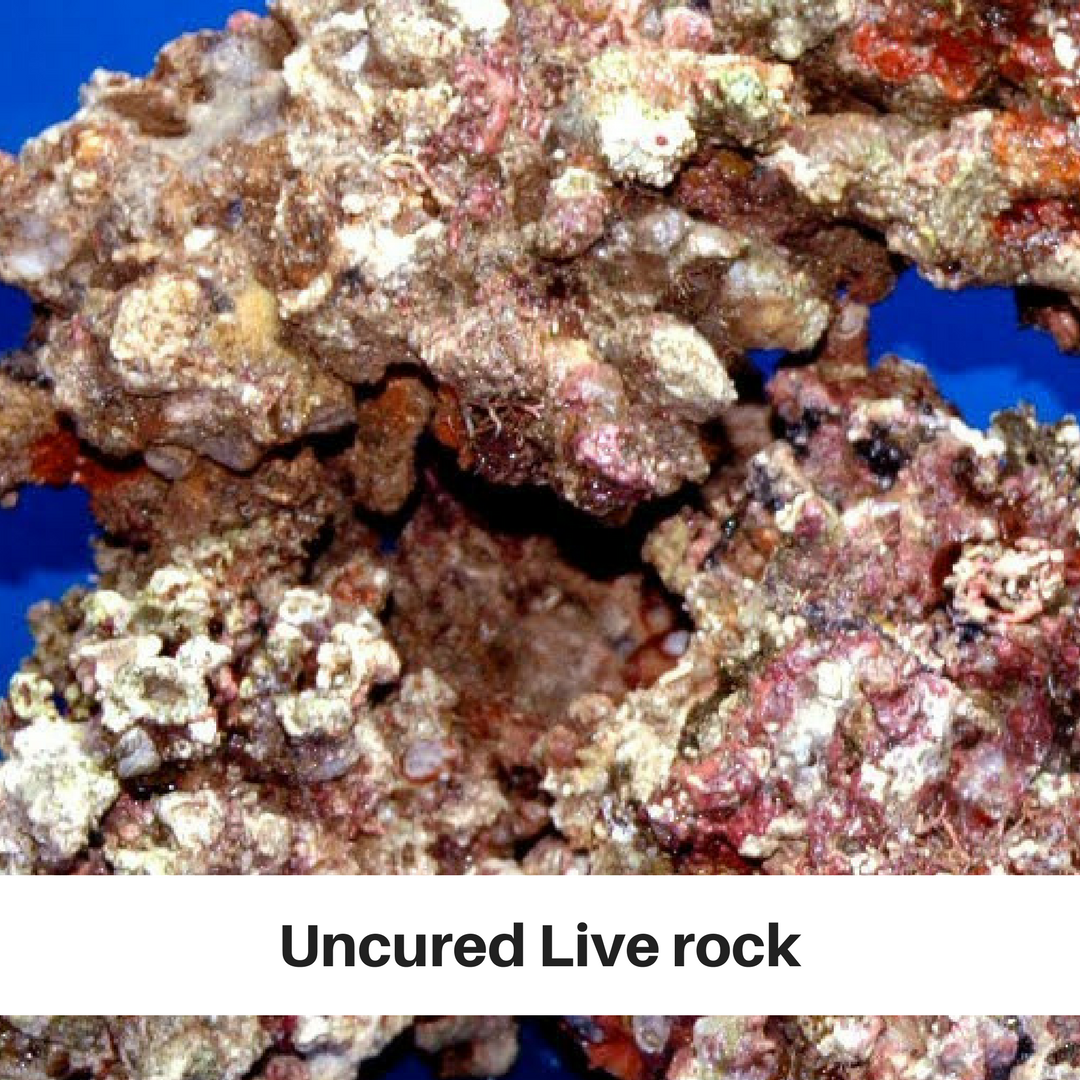Last Updated on April 24, 2023 by Coral Realm
 What is Live Rock?
What is Live Rock?
As you might already be aware, live aquarium rock were the hidden secret to ensuring a thriving saltwater tank. Especially reef tanks with corals! Although nowadays, modern tanks have so much gear that it’s not necessary to have live rock, you can get buy without all that if you use nature’s filters.
For beginners, please note live rock is not coral! Live rock is just that, a rock. It’s deemed “living” because of the natural bacteria inside it and its natural ability to filter the tank through minerals and pores. A coral is an actual living thing.
There’s no reason why you shouldn’t use live rock, I think it makes a tank look much better and more natural. Needless to say, you’ll have longer lasting fish with it too.
It contains elements that keep the tank clean naturally, provides a natural food source for fish and looks amazing. It’s full of healthy good bacteria for nitrification and de-nitrification, a vital step to the vitality of a reef aquarium.
Previously, rock was harvested from the ocean, something as a marine biologist we are staunchly against. Fortunately, this practice has been banned in most parts of the world. A lot of rock came from Floridian reefs, and now is it luckily grown and cultured.
Combined with an LED aquarium light, live rock is both stunning and effective for cleaning your tank, providing valuable nutrients for fish, and becoming the primary biological filter in the reef tank.
Live rock is a natural coral reef structure. It is often found as rubble in the ocean that’s been broken off a natural coral reef. This can be done by human damage, like tourist divers, but most commonly by storms and hurricanes. Because it comes from a functioning eco-system, these rocks not only contain bacteria, but also other living specimens. That includes algae, marine worms, and even tiny crabs. None of them will harm an aquarium.
IN THIS ARTICLE
Benefits of Aquarium live rock
There are numerous benefits from using live rock in your saltwater aquarium and we’ll look into some of these benefits now.
Live rock is a naturally porous substance and when present becomes a primary biological aquarium filter. The porous material provides huge amounts of service area for bacteria to survive. The bag can be both aerobic and anaerobic. That’s the same process that the filter provides. It’s nature’s aquarium nitrogen cycle. In short, the bacteria present in aquarium live rock converts ammonia in nitrite. Ammonia is created from uneaten fish food and fish waste. Nitrite gets converted into nitrate. In the final stage, The anaerobic bacteria then converts nitrate into harmless nitrogen gas that escaped via the surface of the water.
The effectiveness of aquarium live rock to filter the water is entirely dependent on the amount of live rock you have. I would suggest you need at minimum 1 lb per gallon for Fish only tanks (FOWLR) but up to 2 lbs or live rock if you have a reef tank setup. Make sure you regularly test your tank for harmful nitrates and monitor the levels. Don’t assume that live rock is a substitute for a good aquarium filter. You will still need to complete routine water changes, cleans and keep the filters running even with a large amount of live rock, but you won’t have to do it as often.
Bare in mind that if you intend to add more fish, or have fish that have a lot of growing left to do then you will need more live rock to accommodate the growth.
Other Saltwater Live Rock Benefits
In additional to the filtration benefit from live rock, here’s a list of extra benefits you may not have though of.
- Live rock will provide many hiding spaces for fish and other life
- The rocks themselves are an actual source of food for fish and crabs
- The live rock contain not only good bacteria, but other dwellers like live worms and small snails that are good for a reef tank
- Pink algae can grow on the rock which is especially aesthetic, and also provides further food sources

- The many organisms that spring to life after your rock has finally cured can be just as fascinating as the fish in your tank. We can’t tell you how many hours we have wasted just looking for what’s new on our rocks.
- Live rock looks fantastic!
- Live rock takes corals extremely well, and with the natural holes in live rock, corals will often latch down into them
- Your fish will be happier because of the further food sources, the hiding places and the familiarity with what is natural.
Pre-Cured vs Cured Live Rock
When you decide to add live rock to your tank you’ll come across two categories of live rock. These aren’t types of live rock, since the type of live rock is more to do with whether it’s Fiji rock etc.
First of all, let’s explain why rocks should be cured. Then we’ll look at the at the two categories in more detail.
The biodiversity found on all live rock will undergo some kind of natural die off during the transportation process. If the rock is particularly heavy in algae, flora or fauna, then expect more die off. When these organisms die, they produce a lot of excess waste that you don’t want to put into a small body of water such as your aquarium. If adequate curing isn’t undertaken, then these pollutants and toxic compounds seep into your aquarium system. Compounds such as ammonia and other wastes can kill off the good bacteria in filters and live rocks. are released into the water and compromise the health of your entire aquarium system. Only once live rock is properly cured, is it ok to introduce into an existing setup.
If you are just starting a new tank, then this curing process can be done during the initial setting up phase. Do not introduce coral or fish until you’ve finished that phase.
Cured Live Rock
 The difference is that cured live rock has been treated by the seller. First, they scrub and clean the rock to remove dirt of dead organisms and then begin a curing process. That means placing it in their in-house tank for at least a few weeks in a high circulation tank. Once that’s done, then the rock is considered ready to sell.
The difference is that cured live rock has been treated by the seller. First, they scrub and clean the rock to remove dirt of dead organisms and then begin a curing process. That means placing it in their in-house tank for at least a few weeks in a high circulation tank. Once that’s done, then the rock is considered ready to sell.
Of course, you can cure live rock yourself at home, but it’s a pain to do and often a smelly chore. If you choose to purchase live rock, then you’ll have to pay a little more for it being done for you.
Again, even if you buy cured live rock, you will have to do a small amount of curing at home to protect against this die off that may have incurred during transportation to your aquarium.
Despite this seeming like a drastic process, the vast majority of the beneficial life on the rock survive.
Uncured Live Rock
 As previously mentioned, uncured live rock is going to be a lot cheaper than cured rock. It’s still a very viable option to do the curing yourself, but unless you’re very experienced at it, you’ll see more die off. You’ll also have to invest in the gear to be able to do it yourself, which has an associated cost.
As previously mentioned, uncured live rock is going to be a lot cheaper than cured rock. It’s still a very viable option to do the curing yourself, but unless you’re very experienced at it, you’ll see more die off. You’ll also have to invest in the gear to be able to do it yourself, which has an associated cost.
Again, if you’re just starting to set up an aquarium and allowing the filter to go through cycles for good bacteria to develop, then the curing can be done in the same tank.
How to cure the rock yourself:
We’ll be writing an article on how to cure live rock yourself soon, so stay posted!
Where Can I Get Live Rock?
We source our live rock from sustainable live rock growers.
Live rock taken from the ocean causes a ton of issues that are almost too long and too devastating to explain. Live rock taken directly from the ocean is a strange concept to get one’s head around, after all, why destroy wild fish habitat in order for you to create a nice artificial habitat for the exact same fish?
Whenever you buy live rock, always ask the dealer for proof that it was farmed and not taken from the ocean. Taking it from their destroys wild habitat, causes utter destruction of coral reefs (and the fish living there), destroys the sea floor, causes faster undercurrents due to sea floor erosion, and much more.
Where we buy our aquarium live rock:
1. Reel Reef Rock – Environmentally friendly Aquarium products.
Great ethical company that ship all over. A lot of their rock is made from all natural reef eco friendly materials and grown in greenhouses to become a bio-active rock, without the nuisance pests and hitch hikers commonly found on wild rock.
2. ArcReef – Aquaculture Live Rock
ARC Reef Live Rock is 100% Aquacultured and not taken from a wild coral reef. For every pound of Live Rock purchased we deposit 10 lbs. of new reef material back into the ocean.
3. EcoLive Rock – Eco friendly and affordable aquarium live rock
Great company that donate their profits into reef conservation. As marine biologists, this makes us extremely happy!
If you’ve bought your live rock elsewhere, please let us know in the comments!






